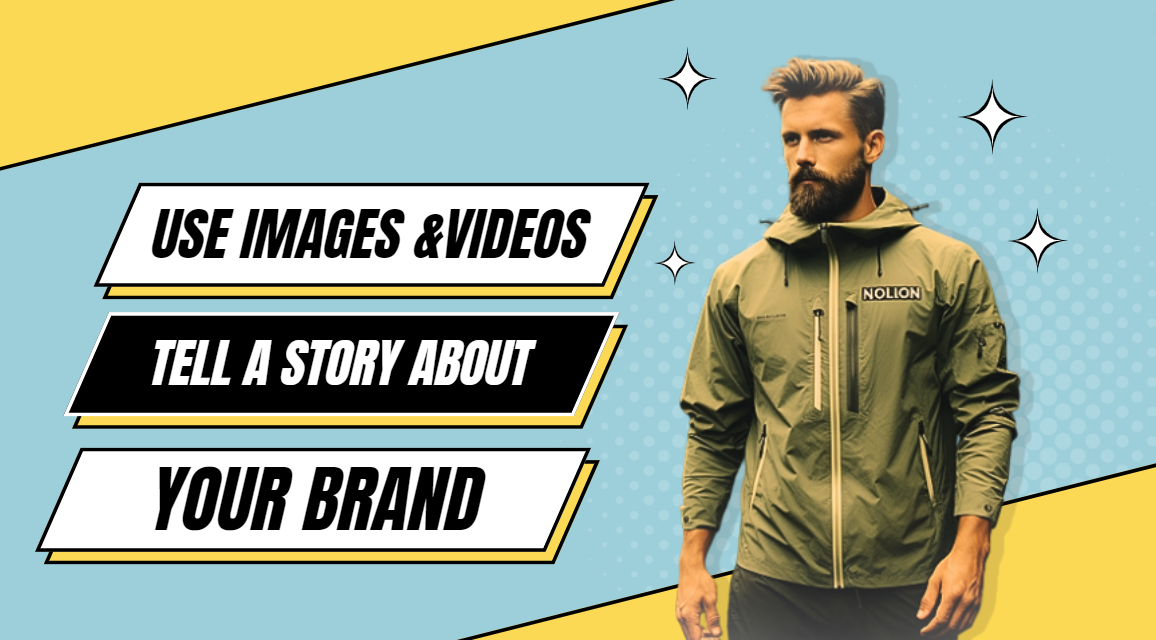Images and videos are powerful tools that can help you improve your website's design, user experience, and SEO. When used effectively, they can capture attention, convey information, and build trust with your visitors.
In this article, we'll cover everything you need to know about using images and videos effectively on your website, including:
- Choosing the right images and videos for your website
- Optimizing your images and videos for search engines
- Using images and videos to tell a story
- Using images and videos to improve your website's design
- Using images and videos to increase engagement and conversions
Choosing the right images and videos for your website
When choosing images and videos for your website, it's important to consider the following factors:
- Relevance: Your images and videos should be relevant to the topic of your website and the content of the page they're on.
- Quality: Your images and videos should be high-quality and visually appealing.
- Branding: Your images and videos should be consistent with your brand identity and style.
- Purpose: What do you want your images and videos to achieve? Do you want them to capture attention, convey information, or evoke emotion?
Optimizing your images and videos for search engines
Once you've chosen the right images and videos for your website, you need to optimize them for search engines. This will help your website rank higher in search results, making it more visible to potential visitors.
Here are a few tips for optimizing your images and videos for search engines:
- Use descriptive file names: When you name your image and video files, use descriptive file names that include relevant keywords. This will help search engines understand what your images and videos are about.
- Add alt text: Alt text is a text description of an image or video that is displayed to users if the image or video cannot be loaded. It is also used by search engines to index your images and videos.
- Use image and video sitemaps: Image and video sitemaps are XML files that list all of the images and videos on your website. They help search engines crawl and index your images and videos more effectively.
Using images and videos to tell a story
Images and videos can be used to tell a story about your brand, your products, or your services. This is a great way to connect with your visitors on an emotional level and make them more likely to become customers.
Here are a few tips for using images and videos to tell a story:
- Use a variety of images and videos: Use a variety of images and videos to tell your story, including product photos, customer testimonials, and behind-the-scenes videos.
- Use high-quality images and videos: Your images and videos should be high-quality and visually appealing. This will help to capture your visitors' attention and keep them engaged.
- Use captions and transcripts: If your videos have audio, be sure to include captions and transcripts. This will make your videos more accessible to users who are deaf or hard of hearing, or who are watching your videos in a noisy environment.
Using images and videos to improve your website's design
Images and videos can also be used to improve the design of your website. They can break up text, add visual interest, and create a more engaging user experience.
Here are a few tips for using images and videos to improve your website's design:
- Use images and videos to break up text: Long blocks of text can be daunting for visitors. Use images and videos to break up your text and make it easier to read.
- Use images and videos to add visual interest: Images and videos can make your website more visually appealing and interesting to look at. Use them to showcase your products and services, or to add a personal touch to your website.
- Use images and videos to create a more engaging user experience: Images and videos can be used to create a more engaging user experience. For example, you can use a video to introduce your company or to explain how your products work.
Using images and videos to increase engagement and conversions
Images and videos can also be used to increase engagement and conversions on your website. For example, you can use images and videos in your blog posts to encourage people to share them on social media. You can also use images and videos in your product descriptions to increase sales.
Here are a few tips for using images and videos to increase engagement and conversions:
- Use images and videos in your blog posts: Images and videos can make your blog posts more visually appealing and interesting to read. They can also encourage people to share your blog posts on social media.
- Use images and videos in your product descriptions: Images and videos can help you to better showcase your products and services. They can also increase your conversion.
se images and videos in your call to actions: When you have a call to action on your website, such as a button that says "Buy Now" or "Subscribe to our Newsletter," use an image or video to make it more visually appealing and click-worthy.
Use images and videos in your social media posts: When you share content on social media, be sure to include images and videos. This will help to capture your followers' attention and make them more likely to engage with your content.
Use images and videos in your email marketing campaigns: Images and videos can also be used to make your email marketing campaigns more effective. For example, you can use an image in the subject line of your email to grab people's attention. You can also use images and videos in the body of your email to make your message more visually appealing and engaging.
Tips for using images and videos effectively on your website
Here are a few additional tips for using images and videos effectively on your website:
- Use the right format: Choose the right image and video formats for your website. This will help to ensure that your images and videos load quickly and look good on all devices.
- Optimize the size of your images and videos: Large image and video files can slow down your website. Be sure to optimize the size of your images and videos before uploading them to your website.
- Use a content delivery network (CDN): A CDN can help to improve the performance of your website by delivering your images and videos from servers that are located closer to your visitors.
- Test your images and videos: Before you publish your website, be sure to test your images and videos to make sure that they are loading properly and look good on all devices.
Images and videos are powerful tools that can help you to improve your website's design, user experience, SEO, engagement, and conversions. By following the tips in this article, you can learn how to use images and videos effectively on your website to achieve your business goals.
Here are some additional tips for writing persuasive and engaging product descriptions:
- Focus on the benefits: What are the benefits of your product? What will it do for your customers? Your product descriptions should focus on the benefits of your product, rather than the features.
- Use strong action verbs: Use strong action verbs to tell your customers what you want them to do, such as "Buy Now" or "Subscribe."
- Write in a clear and concise style: Your product descriptions should be easy to read and understand. Avoid using jargon or technical language.
- Use social proof: Include testimonials from satisfied customers in your product descriptions. This will help to build trust with potential customers and make them more likely to buy your product.
- Proofread your product descriptions carefully: Before you publish your product descriptions, be sure to proofread them carefully for any errors in grammar or spelling.
By following these tips, you can write persuasive and engaging product descriptions that will help you to increase sales and grow your business.


